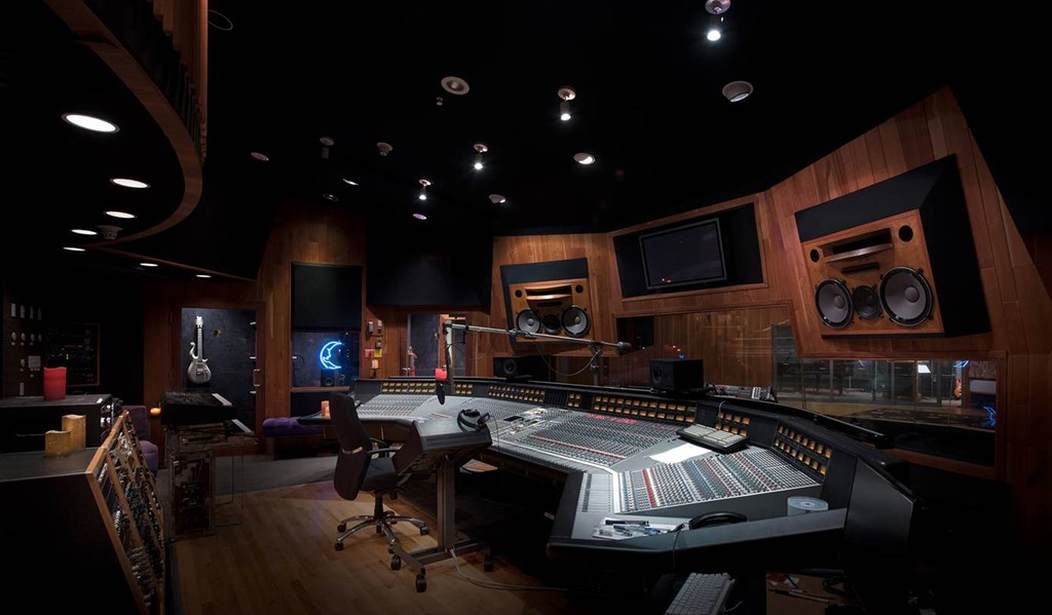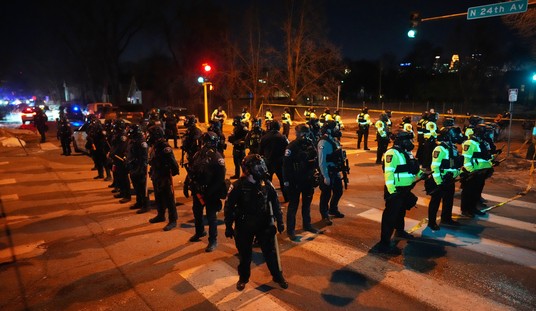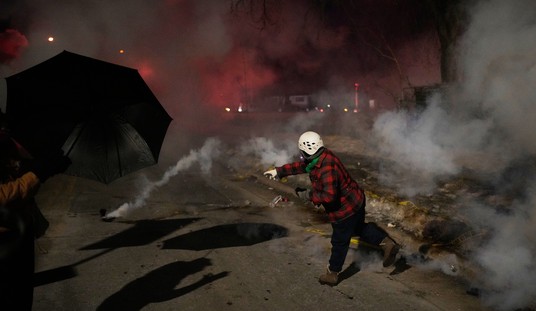In The Artist’s Way, Julia Cameron’s 1992 book designed to aid those who are creatively blocked, one of her recommendations was, “Very gently, very gently, consider whether any aborted, abandoned, savaged, or sabotaged brainchildren can be rescued. Remember, you are not alone. All of us have taken creative U-turns. Choose one creative U-turn. Retrieve it. Mend it.”
That was a suggestion that was frequently on my mind during the period when the big coronavirus lockdown was at its peak and my local gym was closed. I took to updating the multitrack recordings of several of my older songs, replacing wimpy-sounding synthesized bass sounds with much meatier-sounding actual Fender Precision Bass guitar tracks, adding additional percussion such as tambourines and cowbells, and redoing the vocals. All of this was relatively easy and fun, as I had the multitrack master files and all of the audio to the songs I worked on, such as this 2007 song, which was given a newly rerecorded bass guitar track, guitar solo and lead vocals, plus loads of spacey digital echo and reverb effects from my Eventide H9000 Harmonizer:
But how do you redo a song when you’ve lost the master DAW file and all of the individual audio tracks? I wanted to update one of the better songs I wrote and recorded in 2003-2004, a few years after learning how to use a DAW (digital audio workstation), whose multitrack files were lost due to a hard drive crash, and one that contained a muddy, thumpy, bass-dominated mix, and was recorded on my beginner’s-level “stone knives and bearskins-era” PC recording technology. Fortunately, today’s much more advanced software offers a way to crack the problem.
Achievement Unlocked
Izotope’ s RX8, the latest edition of their near 15-year-old RX audio restoration and repair software, includes an applet called Music Rebalance. Input a file of a mixed-down recording, and Music Rebalance will generate individual drum, bass, lead vocal tracks, and an “everything else” track with guitars and/or keyboards. However, these individual tracks contain plenty of digital artifacts; it’s still not a perfect science. Most of these artifacts are hidden when the individual stems are combined together in a new mix, but with the gear that I own now, versus my humble setup over 16 years ago, I knew I could produce something with much better sonics than my 2003-2004 efforts.
I would like to think that within a decade from now, Music Rebalance and similar audio deconstruction applets will be able to spit out much more than four tracks from a mixed-down source track. Hopefully in the future, the drum kit might be further separated so that the kick drum and snare drum have their own tracks for greater control in both remixing or replacing those instruments with newer samples. The “everything else” instrumental would ideally be separated further into a guitar track, keyboard track and lead solo instrument track. But the technology available now is definitely adequate to get started.
Music Rebalance, combined with a program such as Celemony’s Melodyne Studio, which can detect tempos, the notes in melodies, and even the notes in polyphonic chords, makes it much easier for musicians to deconstruct songs they want to cover, whether for live performance, or recording, rather than solely relying upon the ear to detect the notes. In my case, I was deconstructing one of my own songs to reconstruct it from scratch. There are lots of YouTube videos of classic songs by artists such as the Beatles and the Rolling Stones with deconstructed tracks allowing listeners to hear the individual drum, bass, vocal and “everything else” tracks. Music Balance is one of the tools being used to deconstruct those tracks. (It’s likely already being used by loads of cover bands to break down songs to let the band members better learn their parts as well.)
Rebuilding from the Ground Up
So after RX8 separated the (badly) mixed down recording of my 2003 song “Honky Tonk Haven” into individual tracks, I imported those individual files into Bandlab’s Cakewalk DAW. (It’s a massively updated version of the Cakewalk Sonar DAW I was using in 2003 and 2004, but any DAW should work for your own reconstruction efforts.) In 2003, I was working with a rather limited palette of sounds, so this made the detective work necessary to rebuild the song somewhat easier. I knew that the vast majority of the drum loops came from Sony’s Drum Tools Acid Loops. While the drum track generated by Izotope’s RX8 had lots of artifacts, it was good enough for me to import into Celemony’s Melodyne Studio to work out the approximate tempo. I was able to track down the drum loops, and I quickly worked out the exact tempo, which was 120 beats per minute. So with a bit of digging, I got my rebuilt song’s drum tracks eventually sorted out.
Next up was recreating the bass guitar track. The isolated bass guitar track that Izotope’s RX8 extracted was rather muddy sounding, which isn’t all that surprising, since the higher frequencies of the bass guitar are typically contained on the “everything else” track, and even the vocal track. However, this newly-deconstructed bass guitar track was good enough to load into Melodyne, whose auto-tuning app was able to (more or less) work out the notes of what I had played on bass in 2003 and display them onscreen. I grabbed my trusty old 1983 Fender Precision Bass and began to reproduce what I had recorded back in 2003. I plugged the bass into my Fireface UFX+ audio interface using a Radial Audio J-48 DI (direct injection) box to reproduce what I had recorded instinctively back in 2003. Playing the note patterns on my bass guitar was relatively easy, which made it obvious that I had originally recorded these parts on that instrument back in the day, and not on the low notes of a keyboard synthesizer.
Redoing the Guitars
Since the bass was playing lots of root notes of the chords, this also helped me to remember what I was playing on guitar back then. In 2003, I was using Line6’s GuitarPort, which was a breakout box designed to plug a quarter-inch guitar cable into the USB port of a computer, and process the electric guitar with a variety of sounds — early 2000-era attempts to model guitar amps digitally.
Once it all came back to me, I began to rerecord the rhythm guitar. This time around though, as with the bass, I recorded the electric guitar direct-injected (DI’ed) into the computer’s audio interface through a Radial J-48 DI box, which meant I could alter its tone after it was recorded, which is extremely handy. Given the effectively unlimited track counts of DAWs these days, it always makes sense to record a separate DI track, even if the guitarist has a sound that he particularly likes. It allows for setting distortion and tone control settings later in the production, which increases the odds that the electric guitars will sit better in the final mix.
The Radial J-48 DI box has an auxiliary output jack, so that one signal can be fed directly into the recording interface, and another set to an amp or amp modeling device. I used that capability when recording all the guitar parts, sending them to my 2006 Roland VG-88 guitar modeling system to get in the ballpark of the original tones I used in 2003, as raw DI-ed guitar is awfully thin and anemic sounding. If you’ve ever played an unplugged electric guitar — that’s what a raw DI-ed signal sounds like.
I kept the WAV file of the full original mix from 2004 lined up in the DAW, along with the individual stems from 2004 that RX8 generated, and used EQ to help isolate the sections I needed to focus on, and then looped them until the parts came back to me. It took me quite a while to re-learn everything I played in my improvised guitar solo from 2004, and then execute it (more or less) as well as I did in 2004. As I was re-doing the song, I remembered that I wrote the basic tracks in 2003, and then added a new B-section and guitar solo in 2004 to spotlight my then-newly acquired 2000 Gibson Les Paul Historic 1959 reissue. Once again, I recorded the guitar DI-ed through the Radial J-48 interface, and used the VG-88 to give me some temporary Marshall-esque tones while playing, and then editing the guitar solo.
Once the other instruments were re-recorded, the 2021 recreation of my guitar parts were re-amped. Most of these were processed the Eventide H9000’s CrushStation fuzzbox effect, which was fed into the Strymon Iridium amp modeling pedal and then back into the Fireface UFX+. For the clean Stratocaster parts, I ran these tracks through Eventide’s recreation of Roland’s 1980s-era Dimension D chorus effect into the Strymon Iridium’s recreation of a Fender Deluxe Reverb amp and 2×10 Fender Vibrolux cabinet. For the guitar solo, I used the H9000’s CrushStation distortion patch into a plate reverb patch, into Dimension D, into the Iridium’s Marshall “Plexi” amp with its “Cabinet B” setting, a recreation of a speaker cabinet with two 12-inch Celestion Vintage 30 watt speakers.
I had a limited palette of software synthesizer sounds in 2003, so I knew the synth pads were all played using Propellerhead’s Reason software synthesizer, and I flipped through Reason’s presets until I found the one. Once I worked out the chord arrangements from my old guitar parts, it was very easy to play the synthesized pad underneath them on a keyboard to match.
Playing Electric Piano on an Electric Guitar
Running throughout the original song were two Fender Rhodes electric piano tracks, which I originally recorded with Reason as well. To recreate these parts, I played the “left hand” chords on my old M-Audio Keystation Pro 88-key USB MIDI keyboard, and the melodic “right hand” parts on Jam Origin’s MIDI-guitar interface through my 1983 Fender Stratocaster, a reissue of the classic 1957-era Strat. Jam Origin’s interface is a VST-plugin that converts electric guitar notes to MIDI, allowing guitarists the ability to play software synthesizers. (Which is great for me, as my right hand piano chops are nowhere near as good as they could be.) I would loop a couple of bars of the “Everything Else” track and play along with it until I matched the original recording, just as I did to relearn my original guitar solo, and then proceed to another two to four bars. I played along with the original track over and over again for about an hour, until I found the notes I played back in 2003.
The only thing left to replace was the vocal. Back then, my only microphone was an old Shure SM58 from my college rock band days. And given that I was recording in a room that wasn’t acoustically treated (the den in my old home in Milpitas, which doubled as my ersatz project studio), it wasn’t a bad choice actually. The SM58 is a stage mic with a cardioid pattern that’s designed to reject plenty of noise, and works very well in an acoustically unfriendly environment. However, in the years since the original 2003 recording, I had acquired microphones that were much better, including Neumann’s recent reissue of their classic U67 microphone, which made the choice of microphone for this do-over a no-brainer. The U67 was plugged into a Chandler Ltd. Redd.47 microphone pre-amp, Universal Audio 1176LN compressor, and Warm Audio’s WA-2A tube-based compressor.
Once I had the 2003 tracks re-recorded, I could go beyond them, adding instruments that I hadn’t owned back in 2003. These included acoustic guitars: my 2006 Gibson Everly Brothers, and 2019 Taylor GS Mini. The Taylor is setup high-strung Nashville-tuning, and the two guitars together create a stereo 12-string guitar effect. I also added some tambourine as well. This were recorded into the same mic chain as the lead vocal, and afterwards, I tightened my timing in Melodyne’s percussion-oriented mode. The spacey echo on the tambourine during the song’s “drop chorus,” where most of the instruments drop-out or are reduced in volume, was created by processing single hits of the tambourine through the Eventide H9000’s delay and reverb patches.
Also on the drop chorus, the East-West Hollywood Backup Singers enter, and continue into the final chorus. This is a software synthesizer containing the sampled voices of C.C. White, Durga McBroom, and Lorelei McBroom, the latter two of whom performed with Pink Floyd in the late 1980s and early 1990s. If you’re looking for the legendary Ed Driscoll, Pink Floyd “six degrees of separation” connection, there it is…
Redoing “Honky Tonk Haven” is a reminder that even if you’ve lost a multitrack recording, all hope may not be lost; it may be possible to reconstruct it thanks to today’s technology. It’s also a reminder to make backups of backups of your hard drive. As Fleetwood Mac producer Ken Caillat wrote in his 2012 book Making Rumours, “In the music business, unprotected tapes are worse than unprotected sex.” That goes double – as I learned the (very) hard way – for music recorded onto a hard drive.










Join the conversation as a VIP Member